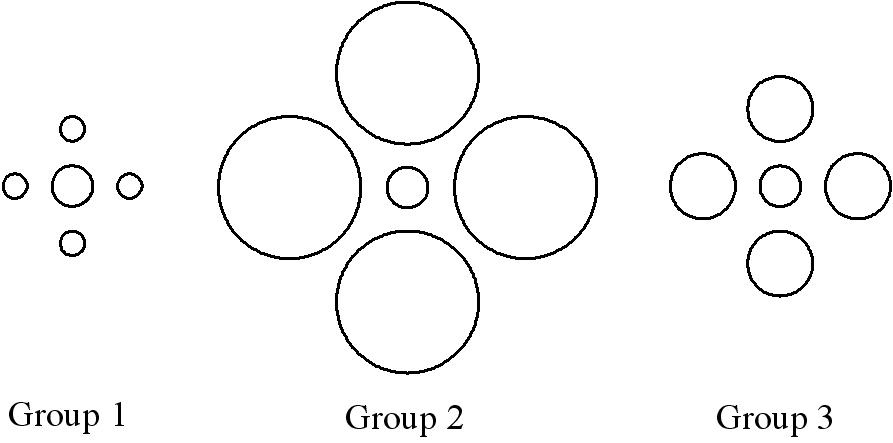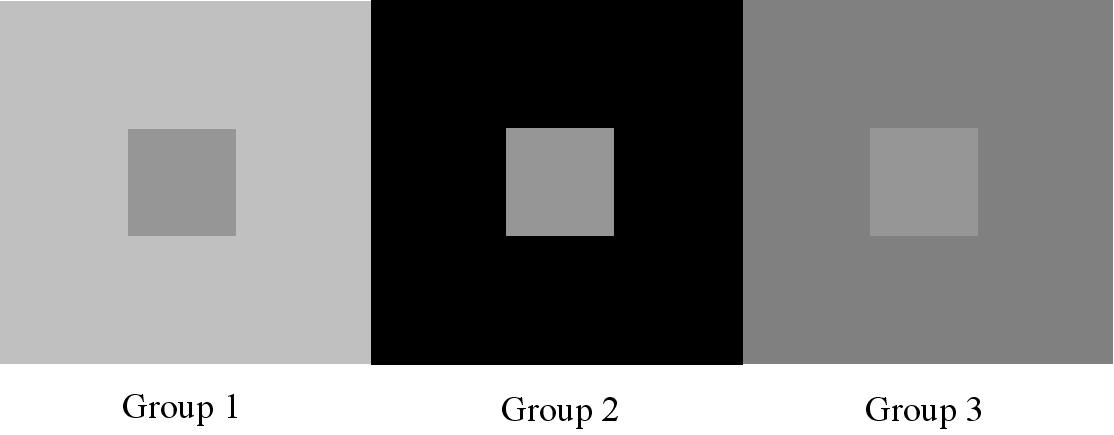
Figure 1. Ebbinghaus illusion
Perceptual comparisons typically produce contrast effects. The Ebbinghaus illusion (shown above) is a good example of a perceptual contrast effect. The center circle is exactly the same size in Groups 1 through 3, but it looks larger in Group 1 than in Group 2 because the circles that surround it are small in Group 1 and large in Group 2. I first started studying these perceptual contrast effects in the mid-1990's. Doug Medin and I found that the similarity of the perimeters affects the magnitude of the contrast. Contrast is greatest when the perimeters of the surrounding items are identical to the center item and reduces as the perimeters become less and less similar. The simultaneous contrast effect is another example of a perceptual contrast effect.

Figure 2. Simultaneous contrast effect
Of particular interest to me because I study the effects of verbal comparisons on magnitude evaluation, the effects of perceptual comparisons are the exact opposite of the effects of verbal comparisons. Perceptual comparisons produce a pattern of bias wherein the larger the difference is, the greater the contrast will be. Notice, for example, that in the Ebbinghaus illusion the center circle appears smaller in Group 2 than in Group 3, because the difference is larger in Group 2 than in Group 3. Likewise, in the simultaneous contrast effect, the center square appears lighter in Group 2 than in Group 3, because the difference again is larger in Group 2 than in Group 3.
Strikingly, verbal comparisons produce the exact opposite pattern of bias wherein the larger the difference is, the more likely estimates and evaluations will be biased toward each other. See my discussion of verbal comparisons.